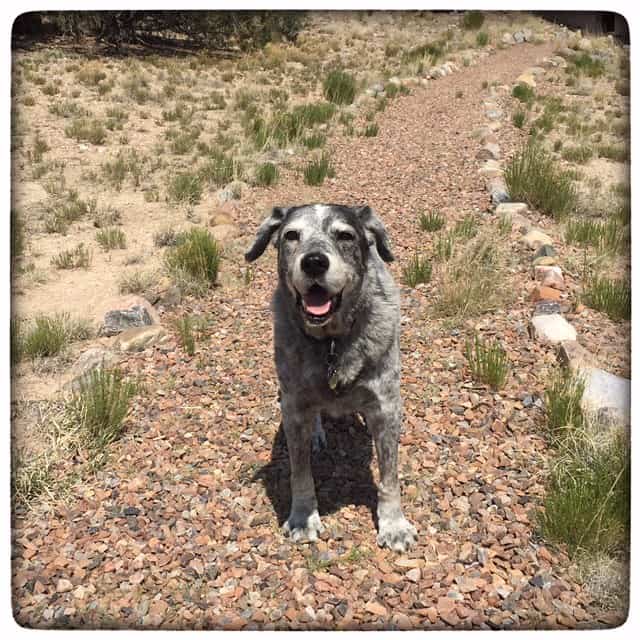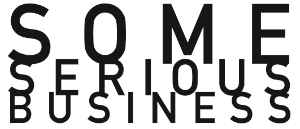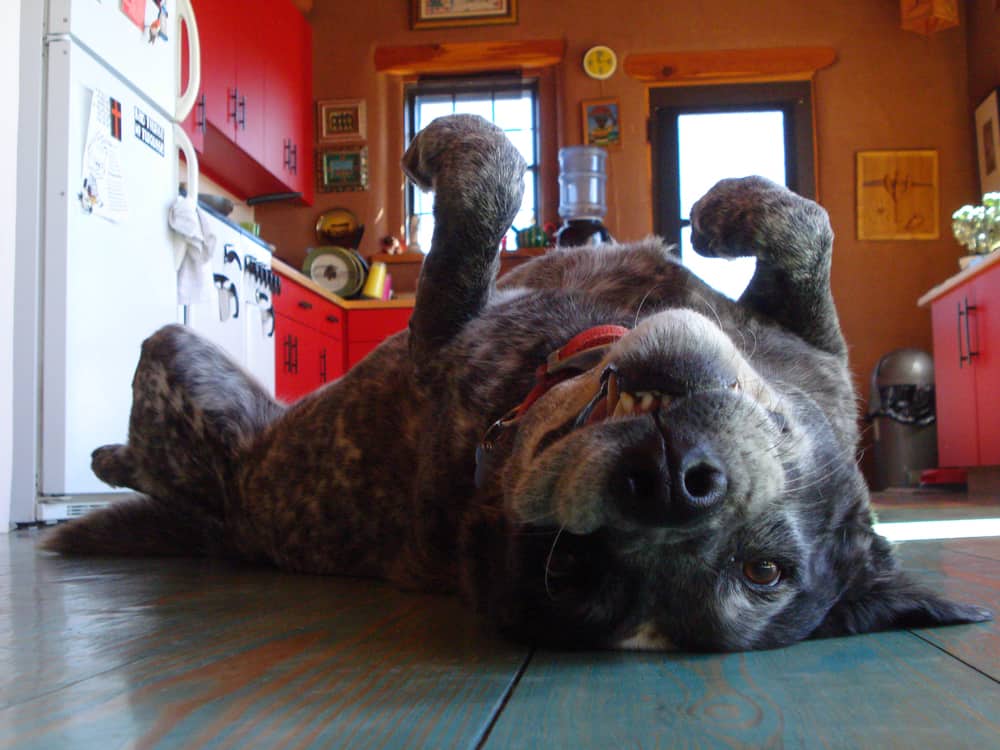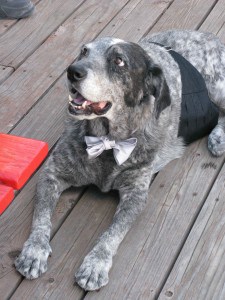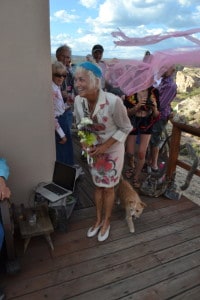Quintan Ana Wikswo interviews SSB Founding Director Susan Martin about her essay in The Dharma of Dogs, Our Best Friends as Spiritual Teachers. The Dharma of Dogs shares the reflections of spiritual teachers and writers who have found a source of deep truth and practical wisdom beneath the furry surface of our four-legged friends.
(1) You mention transgression in your essay. I’d love to hear your thoughts on the role of transgression—in animal and human relationships, in writing and art, and within a personal and collective idea of dharma?
The wedding was all about unconventional behavior. It was framed humorously, a kind of tribute to the Fluxus attitude of debunking institutions—in this case marriage—and all of its many accoutrements: the “destination wedding”; the rehearsal dinner in a tiny restaurant in a tiny village that Snoop attended, with the hand-painted sign leaning on the wall outside that read “Closed for Private Party”; Brian Butterick’s drag performance on the mesa, for a local crowd who had probably never seen a drag queen before; the ceremony in which Snoop texted the best man, ordering me to “first get down on all fours”—a position that was unexpected, provocative, and frankly kind of embarrassing in its overt sexuality.
Sex was on people’s minds the minute I told them I was marrying Snoop. They just automatically went there. I loved that it made them uncomfortable. There were even some people who got angry and accused me of making fun of gay marriage, when in actuality this was my send-up of a time, rooted in the 60s, when we truly thought that marriage and silicone breast implants were a thing of the past. How wrong we were!
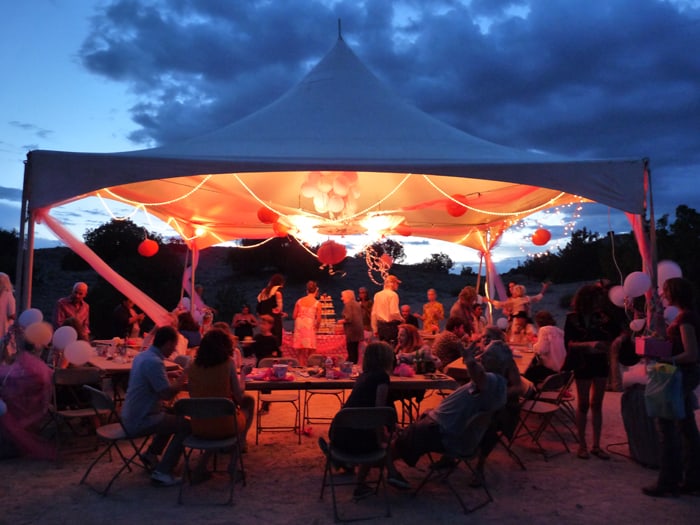
(2) Your research into the legality of marrying an animal is fascinating. Most of these are non-European examples, and certainly New Mexico laws, draw on the hybrid laws of Spain, Mexico, and later the United States. What do you think European-based culture has lost or gained from its increasing distance from animals, as somehow quite separate from humans? Who gets to police a relationship between animals and humans?
I think “man’s” dominion over everything is a mistake, a terrible framing of our relationship to Mother Earth and its creatures. The book of Genesis is truly scary. It is a gift to be on this Earth, and gifts are about relationship. Reading Braiding Sweetgrass by Robin Wall Kimmerer was a real inspiration, in illuminating the connection and uncompromising generosity of spirit that can exist between human beings, animals and the land.
(3) As a lifelong advocate and visionary in the arts, what role do you think dogs play in the creative process?
Snoop was my comedic sidekick. He was all about humor and lightness, and as such, a direct channel to the highest levels of energetic connection and creativity.
(4) One of the inarguably most painful aspects of the dog and human relationship is the dramatic variation in our natural predicted lifespans. How do you think the limited amount of time a human can spend with a dog affects their relationship? If we knew that we only had 10-15 years with another human, for instance, would there be more or less bonding? How is time a factor?
We only really have the present moment. Human beings spend an inordinate amount of time in the past or projecting the future, while animals model the lightness and spontaneity of living in the present moment. Love and mortality are inextricably bound together in all relationships—human and animal. But no one wants to think about death, except the Tibetans, of course! And since no one can predict the moment of their own death, or that of others—it’s their death after all—knowing an animal or human will die before you do becomes a kind of non-issue to most folks, compared to the joy of loving right now.
(5) Almost all artists have dedicated works of art to their companion dogs, and hundreds of thousands of artists are portrayed in iconic images with their animals. It’s interesting that these are images—humans and dogs do not technically share a language. And yet there is communication. What do you think is the nature of that communication? What are dogs telling us, when we love them so deeply without ever being able to conduct a verbal dialogue?
It’s a relief to not have to use your conceptual mind to communicate. It’s shamanic. It’s primal. It’s primitive brain. We are hardwired for companionship and reciprocity. Dogs are perfect objects of our affections. The heart is the central or innermost part of something, a spark that lights and warms us, alive with mystery and imagination. Animals in general tap into this mysterious center, and are able to transport us to a place of wisdom and understanding beyond words.
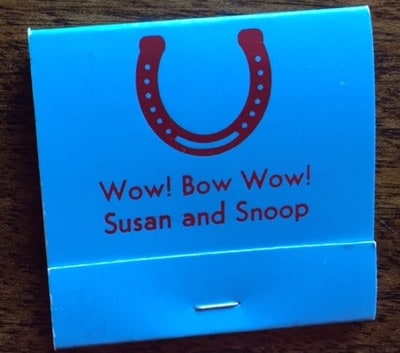
(6) What changed you about going through Snoop’s illness with him, and caring for him? Many of us have cared for dying animals, as well as dying humans. What do you feel is the difference? Where are the similarities?
My attitude towards death has been culturally conditioned, but I learned from my Dzogchen practice that what is called for, always and above all else, is compassion, patience, and presence of awareness. Snoop’s death was an enormous teacher; it was both challenging and unexpectedly rewarding. I was in a kind of state of grace with him, dancing together towards an outcome that I knew was inevitable. When my best friend died of AIDS many years ago, I was less prepared, and found deep psychological conflicts in his behavior…issues of control, boundary setting, codependency. In the end, after experiencing a rough year and a half encompassing the death of nine humans and two animals, I understand that dying is not simply about death—it’s about death and transformation. Love really IS all there is.
(7) In terms of dharma, what do you feel was the greatest teaching you gave to Snoop, and vice versa?
The dharma of Snoop was unconditional love all around. A wonderful teacher, Mukara Meredith, once said that often, when people are damaged or traumatized, the first opening of the heart—the first softening—they can experience is through contact with the natural landscape, or with a pet. That was true for me: simultaneously moving to a mesa in the middle of nowhere, and hooking up with Snoop were central to healing deep wounds. Some people may have the good fortune to become enlightened by accidentally stepping in a pile of shit. I’m one who simply has to trudge the path, doing the work as best I can. Snoop was an enormous helpmate in that regard. He made me a better person in all I do—here on the mesa and out in the world—and I tried to give as good as I got from him.
Visit soundstrue.com or CLICK HERE to purchase The Dharma of Dogs and read Susan Martin’s essay on the gifts and lessons from our “best friends.”
